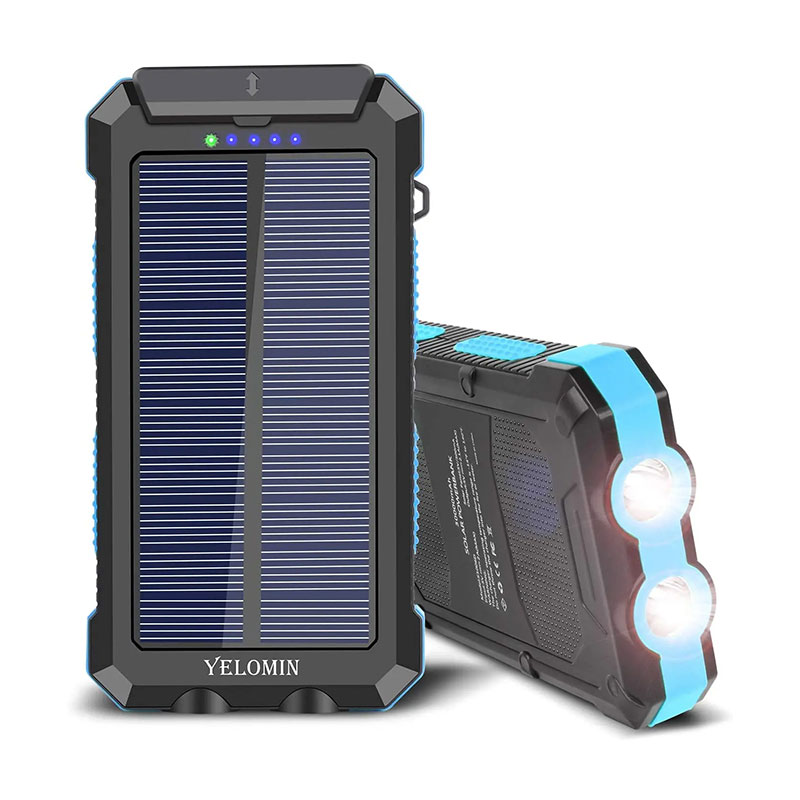Features of an Outdoor Power Bank
2024-06-12
An outdoor power bank is a portable battery pack designed specifically for outdoor activities like camping, hiking, and traveling. These power banks are built to withstand harsh conditions and provide reliable power for electronic devices when away from traditional power sources.
Features of an Outdoor Power Bank
1. High Capacity:
- Battery Capacity: Typically ranging from 10,000mAh to 30,000mAh, allowing multiple charges for devices such as smartphones, tablets, cameras, and even some laptops.
2. Durability:
- Rugged Construction: Built with durable materials to resist drops, shocks, and rough handling.
- Waterproof and Dustproof: Often rated with IP (Ingress Protection) ratings (e.g., IP67, IP68) to ensure protection against water and dust ingress.
3. Multiple Charging Ports:
- USB Ports: Usually equipped with multiple USB-A and USB-C ports to charge multiple devices simultaneously.
- Quick Charge: Support for fast-charging technologies (e.g., Quick Charge 3.0, Power Delivery) for faster recharging of connected devices.
4. Solar Charging:
- Built-in Solar Panels: Some models come with integrated solar panels to recharge the power bank using sunlight, providing an alternative power source in remote locations.
- Solar Efficiency: While solar charging can be slow, it’s a useful backup when conventional charging isn’t available.
5. Additional Features:
- Flashlight: Many outdoor power banks include a built-in LED flashlight or emergency beacon for added utility in dark or emergency situations.
- Compass and Carabiner: Some models come with built-in compasses and carabiners for easy attachment to backpacks and guidance during outdoor activities.
- Battery Indicator: LED indicators to show the remaining battery capacity and charging status.
Benefits of Using an Outdoor Power Bank
1. Reliable Power Source: Provides a dependable power supply for electronic devices when you’re away from traditional power outlets.
2. Safety: Rugged and durable construction ensures the power bank can withstand harsh outdoor conditions.
3. Convenience: Multiple charging ports and large capacity allow you to charge multiple devices simultaneously, ensuring all your gadgets stay powered.
4. Emergency Use: Built-in features like flashlights and solar panels can be lifesavers in emergencies or during extended outdoor trips.
How to Choose an Outdoor Power Bank
1. Capacity:
- Determine your power needs based on the devices you plan to charge and the duration of your trip. Higher capacity means more charges but also more weight.
2. Durability and Protection:
- Look for power banks with high IP ratings and rugged designs to ensure they can handle outdoor conditions.
3. Charging Speed and Ports:
- Ensure the power bank supports fast charging and has enough ports to charge all your devices.
4. Solar Charging:
- Consider models with efficient solar panels if you expect to be without power for extended periods.
5. Additional Features:
- Evaluate the usefulness of extra features like flashlights, compasses, and carabiners based on your specific needs.
6. Weight and Size:
- Balance the capacity and features with portability. High-capacity power banks are heavier, so consider what you’re willing to carry.
Popular Outdoor Power Bank Models
1. Anker PowerCore Solar 20000:
- 20000mAh capacity, solar charging, IP65 rating, dual USB ports, built-in flashlight.
2. RAVPower 25000mAh Solar Power Bank:
- 25000mAh capacity, solar panel, IP66 rating, multiple USB ports, LED flashlight.
3. Goal Zero Venture 70:
- 17700mAh capacity, IP67 rating, dual USB ports, rugged design, built-in micro-USB and Lightning cables.
4. Nekteck 10000mAh Solar Charger:
- 10000mAh capacity, foldable solar panel, lightweight, dual USB ports, LED flashlight.
Maintenance Tips
1. Keep Clean and Dry: Regularly clean the power bank and keep it dry, especially if it doesn’t have a high waterproof rating.
2. Avoid Extreme Temperatures: Protect the power bank from extreme heat or cold to prevent damage to the battery cells.
3. Regular Charging: Even if not in use, charge the power bank every few months to maintain battery health.
4. Inspect for Damage: Check for any physical damage before each use, especially after drops or exposure to harsh conditions.
An outdoor power bank is an essential gadget for anyone who spends significant time outdoors, ensuring that electronic devices remain charged and functional, thereby enhancing safety and convenience.



